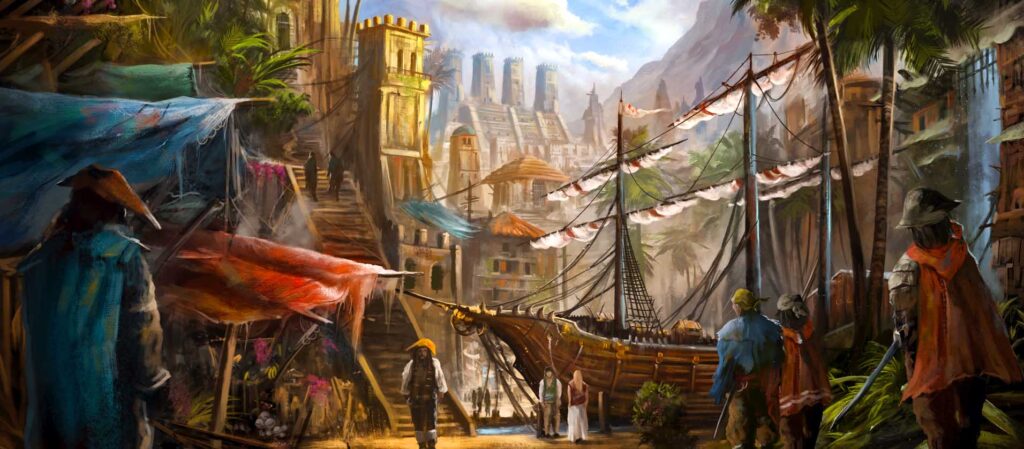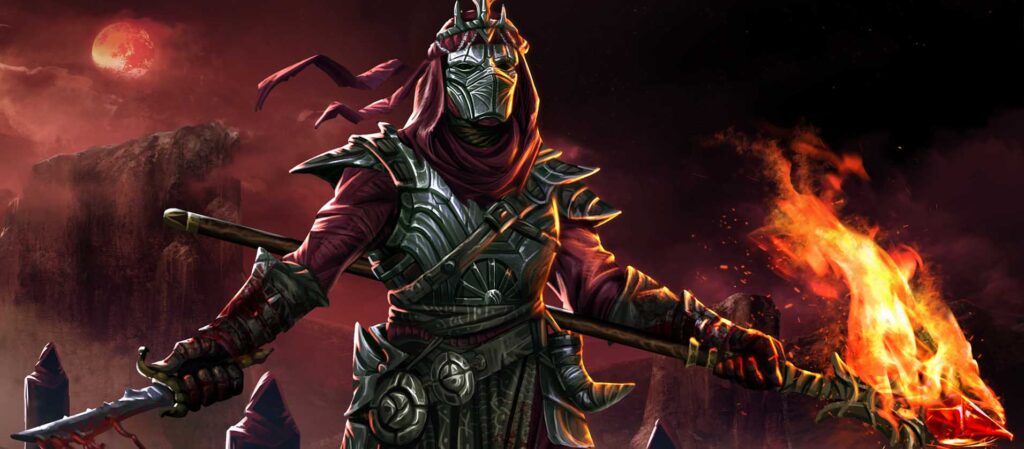In my fifty-five years I have endured more suffering, braved more dangers, and traveled more of the world’s surface than any other Roshani ever has. Or ever will. Yet in all those travels I have never encountered a land stranger than Ishta, known by many as the Pathless Jungle or the Southern Hell. And it is indeed both of these things, and is known by many other names as well including the Sorcerer Lands, the Endless Mire, and the Land of a Thousand Histories. Behold the majesty of my literary talent, which are only exceeded by my stalwart bravery in the face of all danger!
– From The Journals of Yasuma Yoshito of Roshan –

Savage & Deadly
Ishta is a hot and humid jungle region bordering the dry battlefields of Ethennia in the north and the lukewarm Sea Of Blood in the south. It is a naturally occurring lowland, its boarder the Alakh Mountains to the northwest and the Iron Peaks of Dorganthur to the northeast. These natural barriers have long kept the aggressive, warlike princes of Ethennia and the sorceress, scheming nobles of Ishta’s numerous tropical city states from having too much contact with one another.
However, stouthearted merchants still brave the passes from time to time, despite their containing any number of dangerous creatures and degenerate, semi-human troglodytes prone to feasting upon the flesh of the unwary. Ishta is said to be the most savage and deadly region of Athyr, much of which can be attributed to the abundance of predatory wildlife (including carnivorous dinosaurs) and the high number of warring indigenous tribes that inhabit its jungles. But this is something of a misconception, as all of Athyr’s lands can be quite savage and deadly!
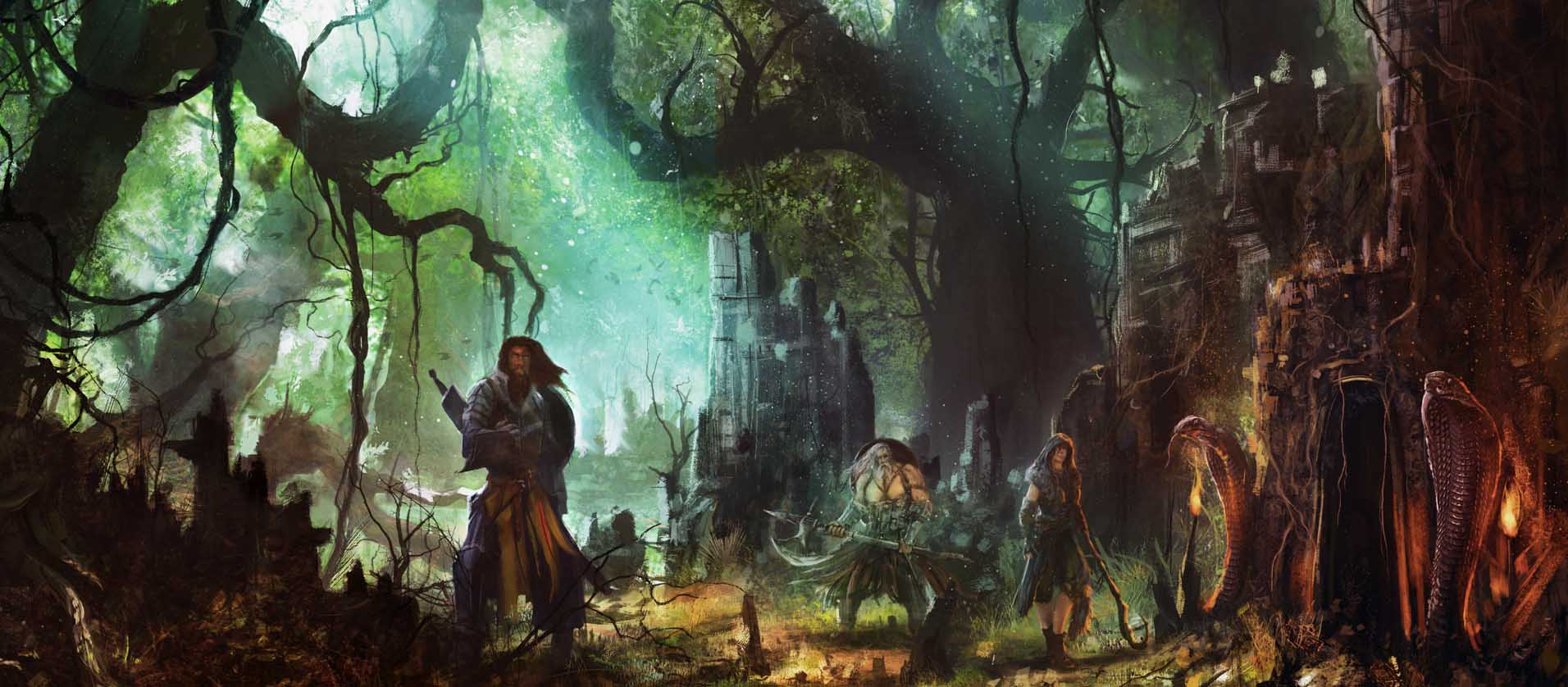
Rife With Adventure
Though much of Ishta’s population resides in small reed and clay hut villages scattered throughout its various jungles and along its rivers and lakes, there are several large city states which maintain a more sophisticated, governed, and decadent existence. The most prominent of these are Shem, Qualhata and Arthos, all ruled by powerful juntas of priests, nobles, and sages, who are both revered and feared by their people. Other important cities include Huexolta in the mountains of Dorganthur, Ixkun on the southern shore of Lake Kahija, and Tixal at the headwaters of the mighty Iguazu River.
Ishta is very old, and many civilizations have come and gone over the ages, leaving behind traces in the form of buried and forgotten ruins in the jungle so old that no living person knows even their names! Some say these are filled with jewels and gold, as well as ancient evil. Though the downfall of these civilizations largely went undocumented, there is reason to believe based on certain writings in Qualhata that the devastating eruptions of Mount Ubetu played a role in their fall. Certainly that ancient volcano lies restless and violent to this day, its seismological rumblings watched carefully by the priest-astronomers of Kalakmal for signs of another devestating eruption.
One thing is certain. Beneath the surface of everything in Ishta, whether natural or man made, lies conflict, struggle, and secrets. The ground rumbles unpredictably. The jaguar devours the monkey in its maw, only to in turn be devoured by the fearless anaconda. Tread carefully, adventurer, when you enter the Pathless Jungle!
Author’s Notes – Jason Walters
Hello gentle reader. Greetings from Nevada’s Black Rock Desert, the hell-that-is-heaven, heaven-that-is-hell of the American Intermountain West. I hope that this day finds you well, and thank you for taking time out of your busy schedule to read about Blood and Doom.
Before I began work on the land of Ishta, I naturally gave some thought both to Ferruccio’s vision for this work, as well as the deceptively complex question: what is the genre of sword and sorcery? Beyond of course the classic proposition that “A strong man with a sword in his hand always beats a weak man slowly casting a spell!” I knew that Ferruccio didn’t simply want to make an homage to Robert E. Howard’s Conan the Barbarian stories, as beloved as they are by many (including myself). Or emulate the dark counterstereotype of Michael Moorcock’s Elric the Eternal Champion in all of his tormented, sickly glory.
Instead, his vision was that of a primitive world placed in literal peril by the machinations of evil cults dedicated to summoning alien gods, with nothing standing between the people of that world but brave souls with steel in their hands, iron in their hearts, and perhaps a bit of investigative ability in their heads. This world is Athyr; a place very much like, yet also very much unlike, our own during its heroic bronze age. And I knew that it would have to be a land that is counterintuitively both entirely new and alien, yet rooted in preexisting places that are old and familiar.
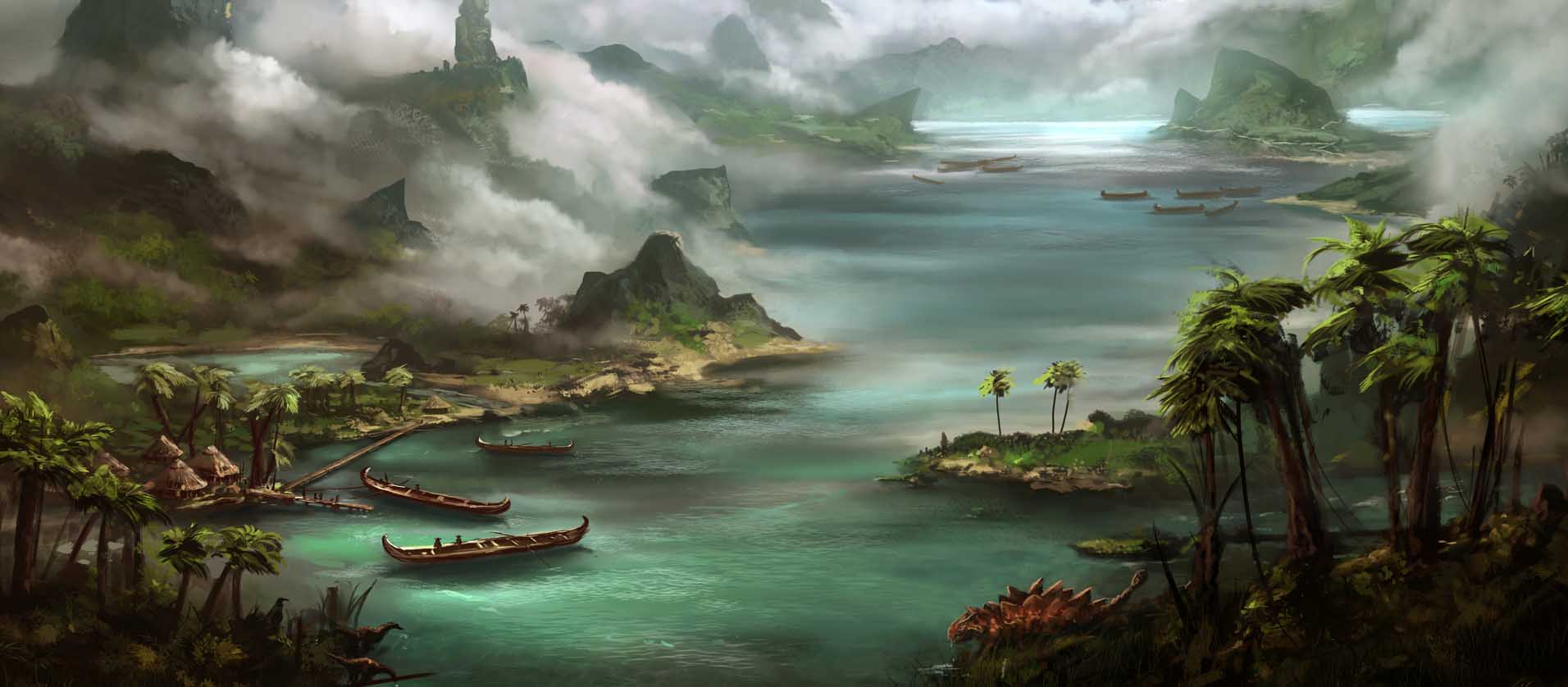
To get myself ready for the project, I decided to search for a very specific “voice” in which to write. I was already reasonably familiar with the “pulp” voices of the old fantasy magazine writers like Howard, H.P. Lovecraft, Fritz Leiber, and the collaborative Thieves’ World short story collections. And I was part of Hero Games black when it published Allen Thomas’ Valdorian Age swords and sorcery setting. So I felt that I was starting out with a good grasp of the genre. But, having been on a bit of a Jack Vance kick lately, I hoped to interject a bit of his magical ability to create or find nouns and verbs that are unfamiliar to the reader, yet by their own context and nature oddly self-explanatory when read. I then set about reading works by Moorcock and Roger Zelazny, thinking that the detached, amoral tone of the 1970’s New Wave fantasy movement would be a good way to go; though at this point I’ve reconsidered that idea, having been somewhat disabused of it by this project’s developmental editor for reasons that are now obvious in retrospect.
So now I’m sort of muddling along, reaching for my author’s voice in writing Ishta as best I can. (So far, so good I think. Or I hope in any case.) And of course there’s the question you ask yourself with any roleplaying game project; namely, how should it be structured? At first I thought a good way to go would be to write something like a cross between one of Ed Greenwood’s Volo’s Guides, William H Prescott’s Conquest of Mexico, and Ibn Battuta’s travel writings; a conversational (even gossipy) first-person traveler’s account of the mysterious and alien land of Ishta.
So I wrote my first 10,000 words in this format from the perspective of one Yasuma Yoshito of Roshan, another land in Athyr far from Ishta with a completely different culture and perspective. This was an enjoyable exercise, but didn’t fit the the final format we decided on for the project. It now serves as a sort of “primary source” for my work on eastern Ishta, with small quotes from it located at the beginning of each section, so that the Journals of Yasuma Yoshito of Roshan live on in Blood and Doom in a small way. Which makes me as happy as I’m sure it would him!
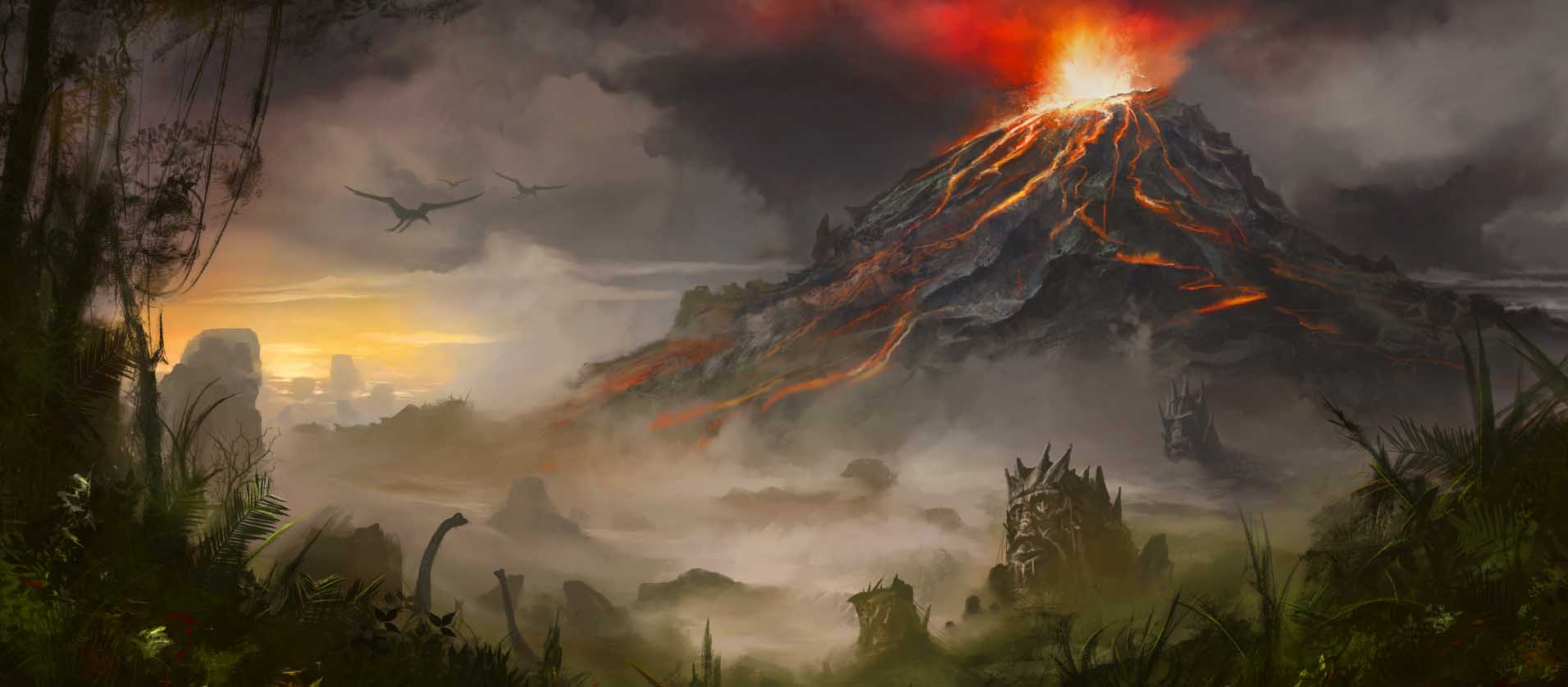
By now I’m sure you’re asking yourself: what is Ishta anyhow? In my telling it’s a roughly Brazil sized subcontinent, mostly comprised of jungle, rivers, and wetlands, walled in on two sides by towering mountains and on the others by pirate infested seas. Cut off from the rest of Athyr save for caravans coming through passes and trade with the pirates themselves, it’s developed a unique culture that’s influenced by a mixture of ancient Mayan, colonial Latin American, ancient Summerian, and East African cultures and civilizations. I’ve drunk liberally from the refreshing springs of each of these lands in an attempt to create something new.
Ishta has large cities, but the inhabitants of these places tend toward dark sorcery, corruption, and predation, while the rural and wildnerness populations are noble with a tendancy toward nature magic and worship. These two sides of Ishtan cultures are in a perpetual state of friction, with the urban populations increasingly falling prey to the various cults of Blood and Doom, and thus increasingly seeing their rustic cousins as a resource to be harvested. All of which should prove an exciting place for player characters to adventure in and, hopefully, change for the better.
I’m now many thousands of words into writing about Ishta, and I hope you enjoy my work when it’s completed and has been put through developmental and copy editing. And I hope that when you play Blood and Doom you choose to visit the Sorcerer Lands as you struggle to save the world of Athyr from the doom that beings from beyond our universe would visit upon it.

